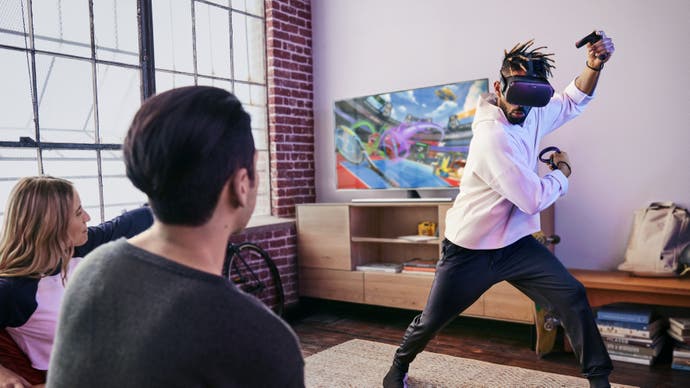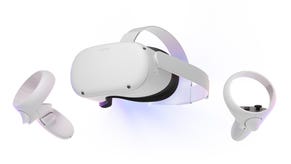Hands on with Oculus' two big evolutions: Quest and Rift S
Head, set, go.
It's been three years since the initial launch of Facebook's Oculus Rift and this spring, Oculus will be launching two new versions of its headset. Both the Oculus Quest and the Oculus Rift S will retail for £399/€449 each, but after hands on time with both, it's safe to say they offer radically different experiences depending on what kind of gamer you actually are.
Oculus Rift S hands-on
The next iteration of the Rift comes with Oculus Insight - that's full, six degrees of freedom tracking using five inbuilt sensors on the headset that offer room scale VR, right out of the box. This means no more annoying external sensors need to be placed around your gaming setup in order to track the movement of both your head and hands.
Whilst the Rift S still relies on PC computational power to run its software, the amount of cables needed to do this has been reduced to just one single five-metre cable. Not only is this much more convenient in the long run, it also opens up the possibility of playing on powerful laptops with a limited number of USB ports.

The headset itself is said to weigh only a little more than the original Rift, but as my go-to headset is a PlayStation VR, it felt remarkably light on my head. It's also one of the comfier headsets I've worn, with a brand new, ergonomic 'halo' design to the headband that helped keep the visor snug against my face. This halo also made putting on or removing the headset much easier than other headsets that rely on velcro straps for adjustments. The mechanisms in place to fine-tune the visor position also felt very similar to those found on the PlayStation VR.
I played two games on the Rift S, Asgard's Wrath and Stormland. Both games looked incredible thanks to the display resolution of 1280x1440 pixels per eye (that's 2560x1440 total). As a comparison, the PSVR offers a resolution of 960x1080 pixels per eye, so for me everything seemed clearer, colours were brighter and objects remained crisp and sharp even at long distances.
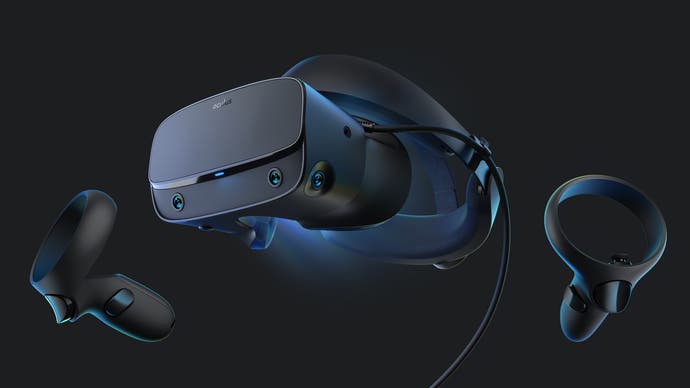
Tracking on both Asgards' Wrath and Stormland was perfect and I was able to swing swords and climb walls without experiencing any awkward controller drift. I played stood up in a relatively small space but the freedom to move around was refreshing after mainly playing PSVR from a seated position. I will admit I did get tangled up in the headset cable during a particularly aggressive sword fight in Asgard's Wrath, but that's a problem that affects all wired headsets at the moment.
And of course, all the games and apps purchased for the original Rift can be also played on Rift S, so if you're looking to upgrade your existing Rift, your library will still remain accessible.
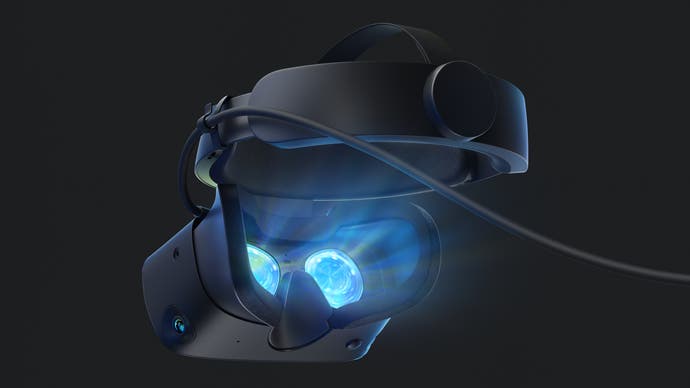
Oculus Quest hands-on
If the Rift S is for your big home PC system, the Oculus Quest is the VR kit you can pack up and take around your mate's house. It's a completely portable, all-in-one gaming system for casual gamers who want to play VR games but either don't want or can't afford a big gaming PC. Think of the Quest as a console as opposed to a PC and you'll get the idea of where Oculus are going with it.
There will be just over 50 titles available on the Quest store at launch and Oculus have come up with some fairly strict rules as to what they will and won't allow on it. Quest games will need to be quality, finished content, so don't expect to see demos or early access titles in the store (Rift S on PC is the place to find those). It was also stated there would be no adult content allowed, which I'm presuming means games with excessive nudity compared to games with violent content. The Quest does come with a built in web browser and some media apps though, so you can watch VR videos online if you want, but again these media apps will be streamlined in order to keep only the highest quality items on the store.

Crossbuy and crossplay will also be available on the Quest. If supported, anything you've already bought on the Rift will be free to play on the Quest and vice versa. [Editor's Note: Oculus has clarified to Eurogamer that both crossplay and crossbuy are not mandated, but something available to developers if they so choose.] Regarding crossplay, it's entirely possible to play with owners of other Rift headsets, but this does come at the developer's discretion - as does the ability to use crossplay outside of the Oculus ecosystem.
Comfort-wise, the Quest feels very different to wear compared to the Rift S. For portablity's sake, the headband on the Quest is made of a tough material with velcro straps for tightening it around your head. The 'every person' design of the headset means there's fewer ways to adjust the visor and it also means there's a lot more room inside them, so it's easier for glasses wearers to wear them comfortably. However, this left a visible gap just above where my nose was and there seemed to be no way to tighten that at all. The headset itself felt a little heavier than the Rift S due to the built-in battery, but to be honest, it didn't feel any heavier than the PSVR headset I'm used to.
One of the coolest features in the both headsets was the built-in speakers in the head strap. I used headphones when playing on the Rift S so I can't comment on that, but the speakers on the Quest were pretty loud and I could clearly hear the songs of Beat Saber over the background noise of the event. Of course, there is also the option to use headphones with the Quest, if you'd prefer.

Screen resolution on the Quest is also noticeably higher than on the PSVR, but I couldn't tell much difference between it and the Rift S. According to the specs, it actually comes with a higher resolution than the Rift S, coming in at 1600x1440 pixels per eye. That's balanced out by a drop in the display refresh rate though - the Rift S runs at 80Hz while the Quest runs at 72Hz.
Players will notice significant graphical downgrades on the Quest compared to the Rift S, as most games have had to make a few sacrifices in order to work well on the standalone unit. For instance, Beat Sabers' translucent walls of death have been solidified in the Quest to reduce the amount of pixels the game needs to draw. That didn't change the feel of the game in any way at all though, and I found Quest's Insight tracking to be completely accurate to the swings of my sabers - even though it only has four sensors on the headset compared to the five on the Rift S.
So the Oculus Quest is great for portability, but how about battery life? Well, there are limits to it, of course, but no one could give me an exact answer to this question, only that it's "more than two hours". I believe the battery length will also be affected by just how processor-heavy the software you're playing actually is, so this might be why Oculus are currently unwilling to share this information. In my experience however, two straight hours in VR is normally more than enough.

Obviously, Quest owners are going to want to use the headset untethered as intended and playing Beat Saber without the fear of becoming tangled in cables was an absolute joy. The Quest is bundled with a charger and three metre cable so you can tether while you play if you do need to urgently charge it, but maybe it's wise to play something other than Beat Saber if that's something you intend to do!
One of my biggest concerns about the Quest was to do with the social aspects. As the unit is portable there is no social screen output like you might find on a PSVR or a PC based VR headset. As a keen VR streamer and a hater of cables, I was hoping to use the Quest for future livestreams but according to the unit's makers, this feature is some way off.
"It's high on our list to do, along with all our other things that are high on the list to do and we know it's necessary and we know you need it," Jason Rubin, VP of AR/VR partnerships and content at Facebook told me. "I can't give you a date, but we will do it. There is something going on with Chromecast right now though."
"Yes there is!" chipped in Sean Liu, director of product management at Oculus. "We think casting is actually a really important part of the experience. Imagine when you get gifted this at Christmas, the first thing you do is unbox everything and people say, "What can it do? Show us!" and so we want you to be able to do that. There's a casting solution for your phone so you can actually display what you're seeing in your headset on your phone. Or you can also show it on TV's with Chromecast.
"Right now the Quest only lets you livestream direct from the headset to Facebook, but you could do a non-live capture. We actually have a recording mode as well in the headset, that just saves it to internal storage within the device and then you can pull the video out of that. There's 64GB of built-in memory and you can just connect a cable to your computer and just pull the file off it like that."
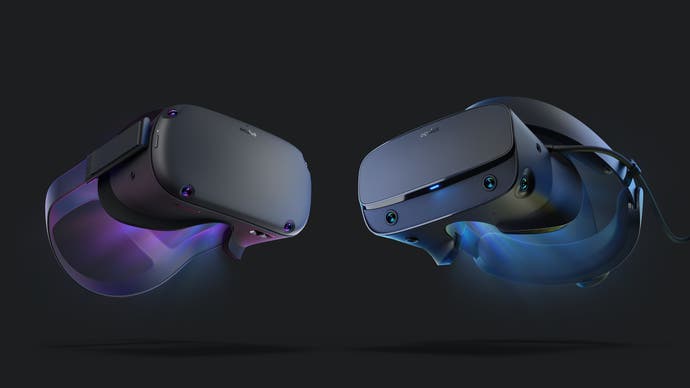
For me, the most interesting and game changing feature of both headsets was something called Passthrough+, which unfortunately wasn't available to demo at the show. Using Passthrough+, users can get a glimpse of their surroundings without the need to keep taking their headset off. Not only does this mean you'll be able to avoid colliding with objects if you want to move around for something in the real world, but it also enables a neat feature whereby you can draw VR guardian boundaries in real time in whatever room you're playing in.
With the launch of these two products on the horizon, it seems like Oculus is on course to corner the VR market by flooding it with headsets specifically tailored to different types of consumers. The asking price is much more tempting than the initial Rift launch cost of £549 as well, so that should help to open the market up to the VR curious who were previously priced out.
I'm a very big fan of the console-like approach Oculus has taken with the Quest and the fact it can be played completely untethered, in any location you want is a huge step in the right direction for VR. But, if I had to choose between the pair right now, I'd probably go for the Rift S as it's much more attuned to my streaming and gameplay sharing needs.
